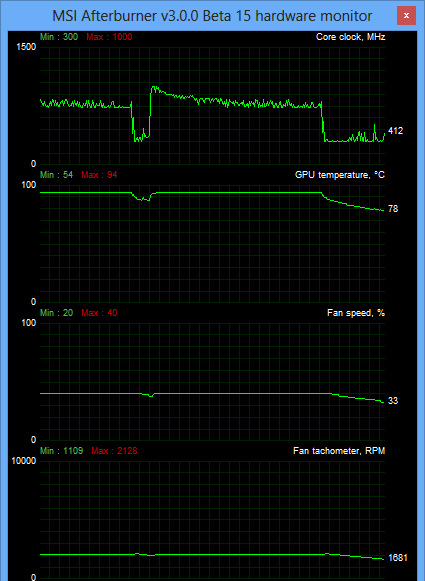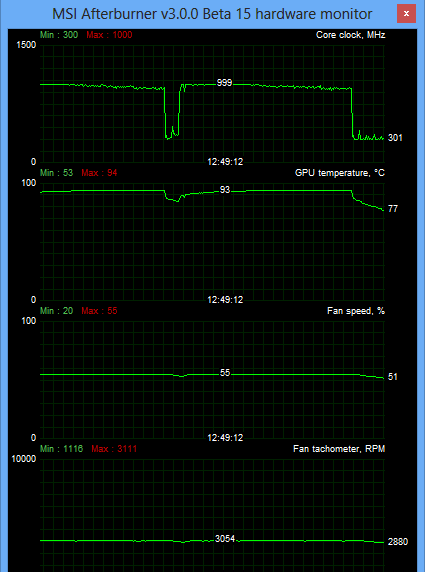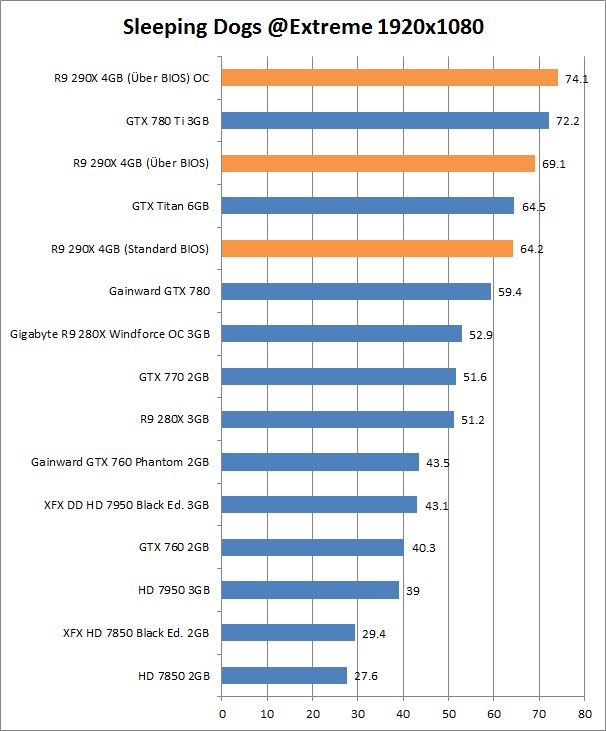Index
Needless to say, the overall overclocking potential is limited due to the cooler. However, the GPU itself is ready to overclock if you max out the fan or use Uber BIOS, but unless you plan on gaming with earplugs or headphones, this is not an option. Afterburner beta does not allow for voltage adjustment, but this support will be probably added in later versions.
In any case, we managed to hit 1100MHz on the GPU and the memory was willing to go up to 1550MHz, which was enough for a 7-percent performance boost (using Uber BIOS).
We must stress that it’s easy to unlock more performance by simply tinkering with the fan settings, but noise is a problem. In demanding applications, because GPU gets too hot too fast, the PowerTune 2 algorithm drops the GPU clock to well below 1000MHz, even below 800MHz. Depending on the situation this can result in a considerable performance drop. Uber BIOS increases the fan speed to 55%, but this can also be done manually, using AMD Overdrive. This way we could easily force the card to run at 1000MHz much of the time in Quiet BIOS mode. In Quiet BIOS mode it spends most of its time at below 850MHz. The performance difference after increasing fan speed was about 9 percent, but noise was a big problem and even if you are used to plenty of noise, trust us, it’s uncomfortable.
Auto fan - GPU clocks

Manual Fan - GPU Clocks
The graph shows a few results for the R9 290X with Quiet BIOS, results when GPU/Memory clock s left the same but fan speed is set at 55% RPM, and performance after our overclocking run which topped out at 1100Mz for the GPU and 1550MHz for the memory with fan set at maximum.

